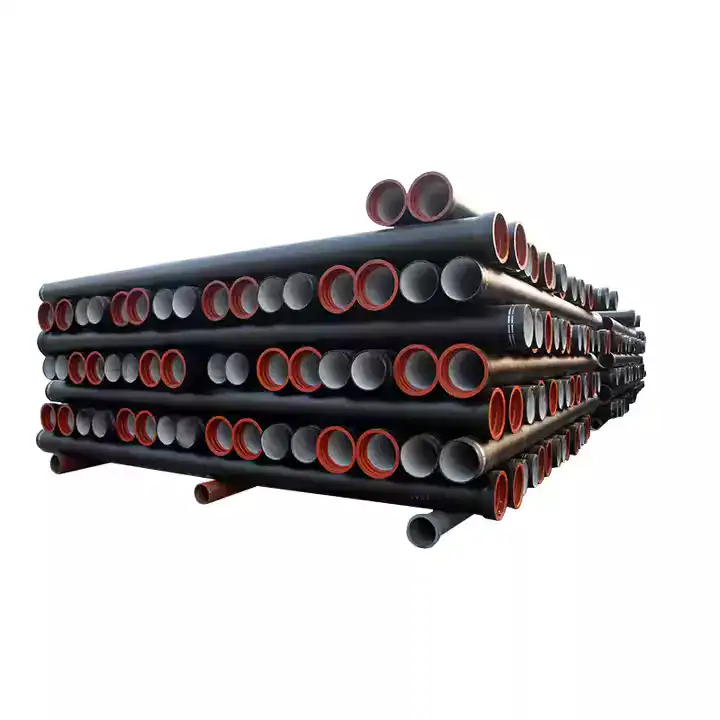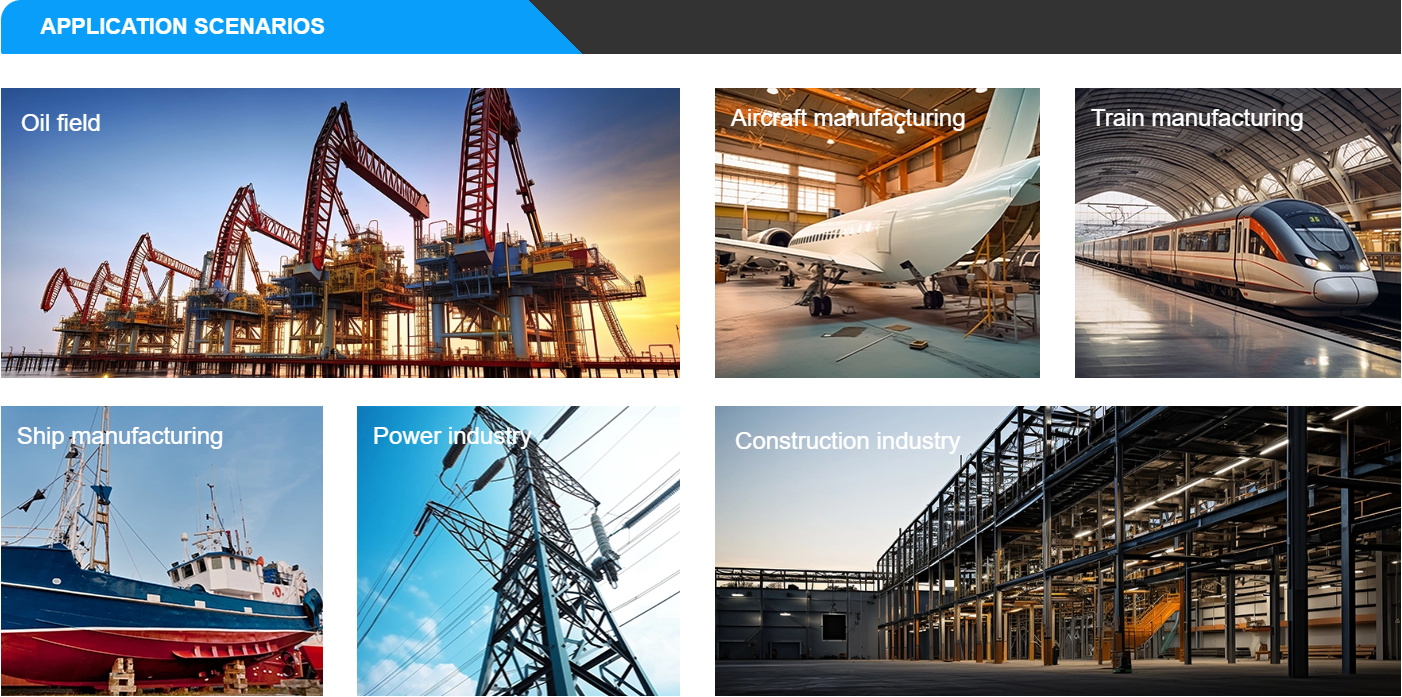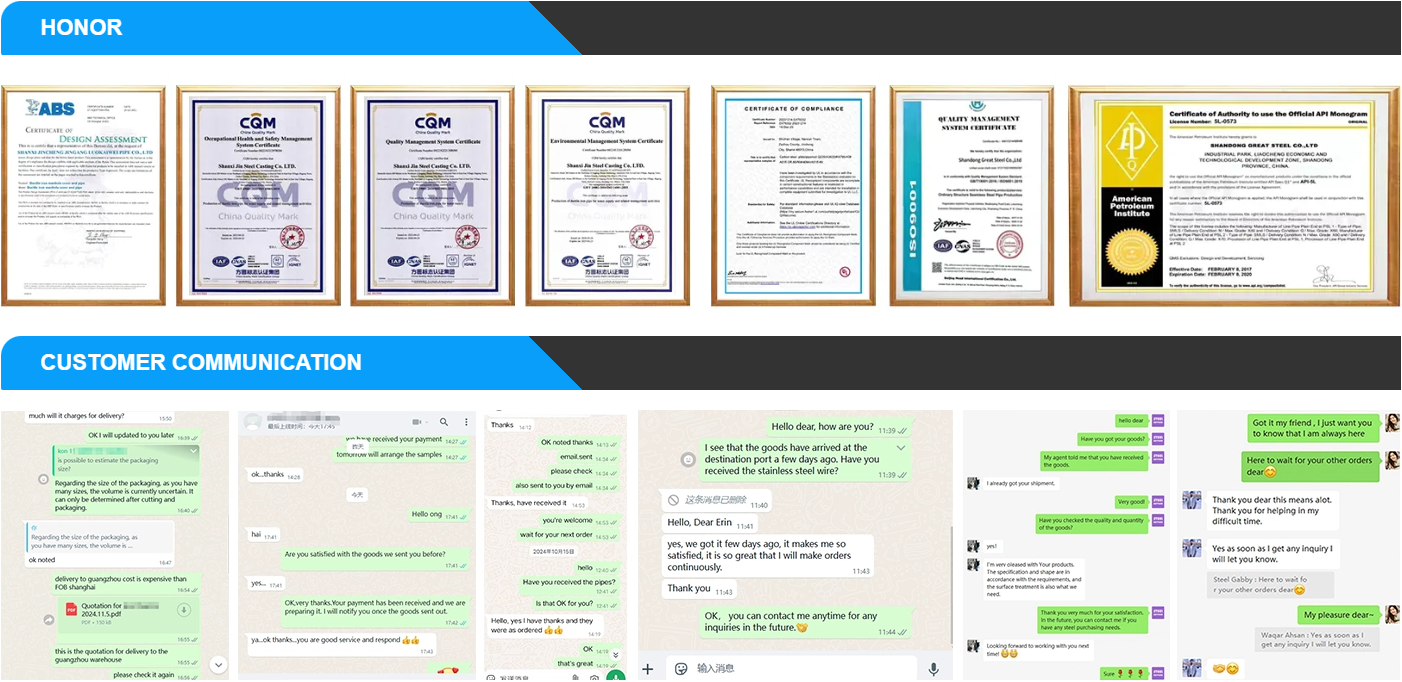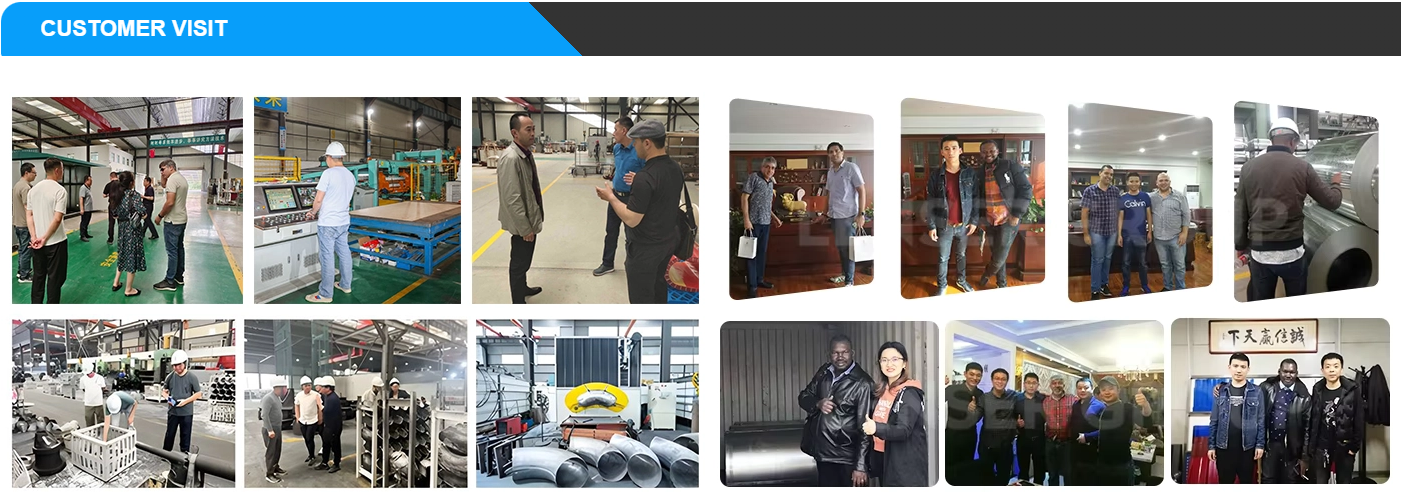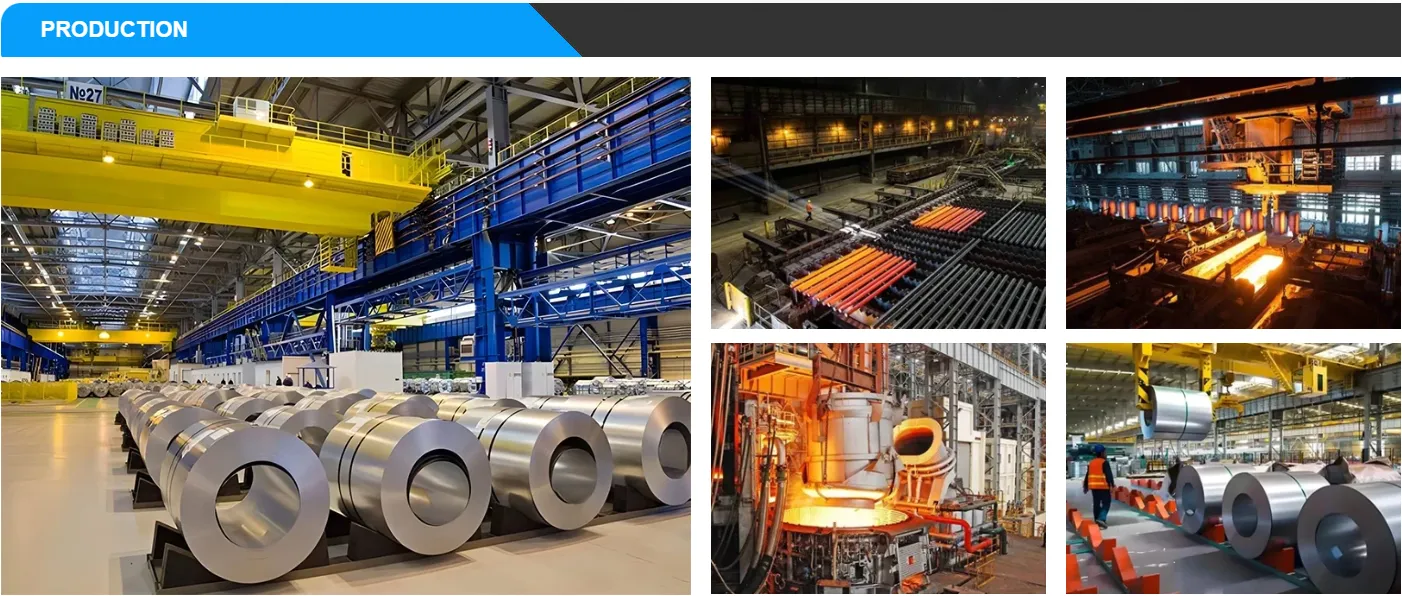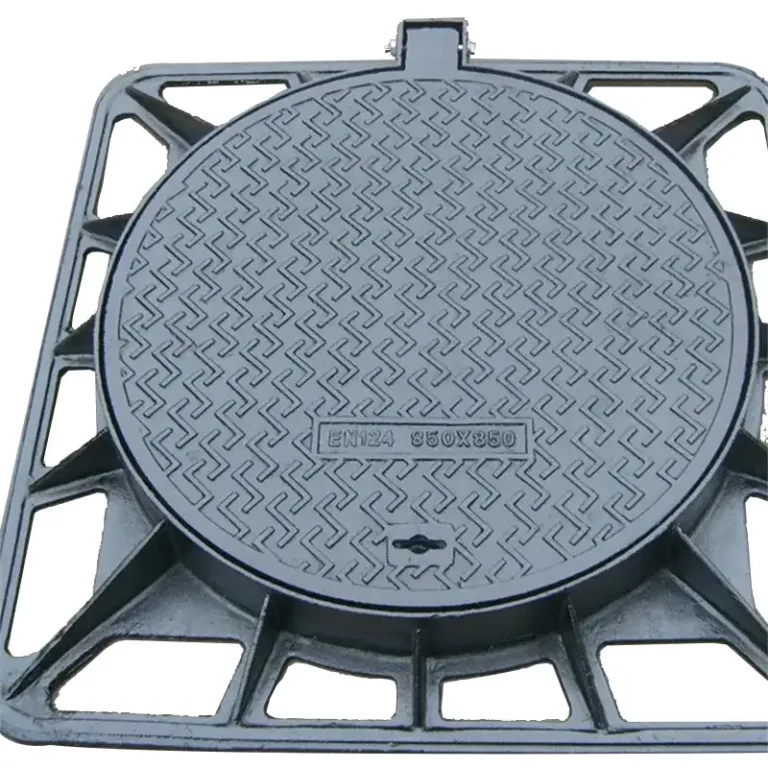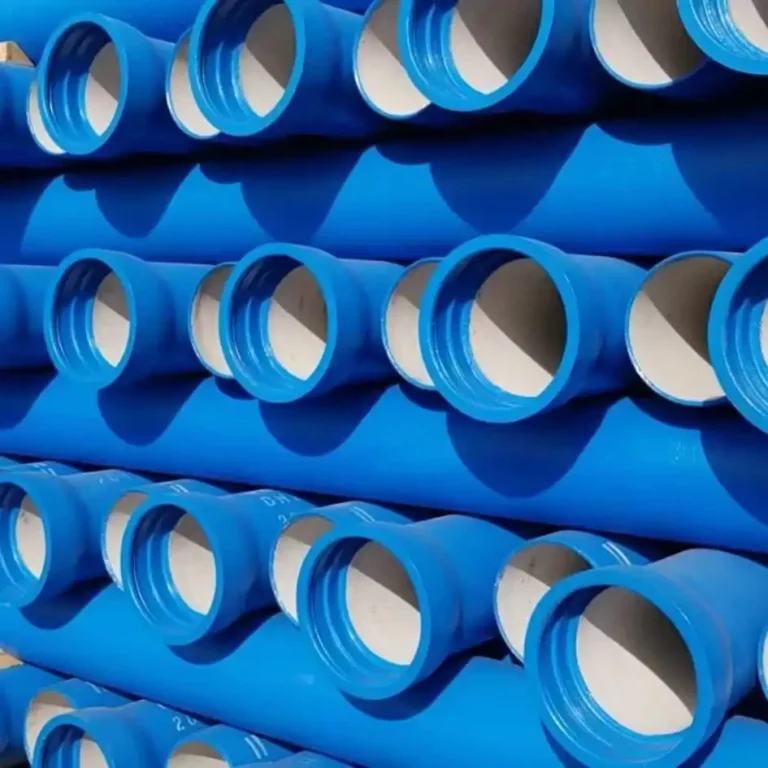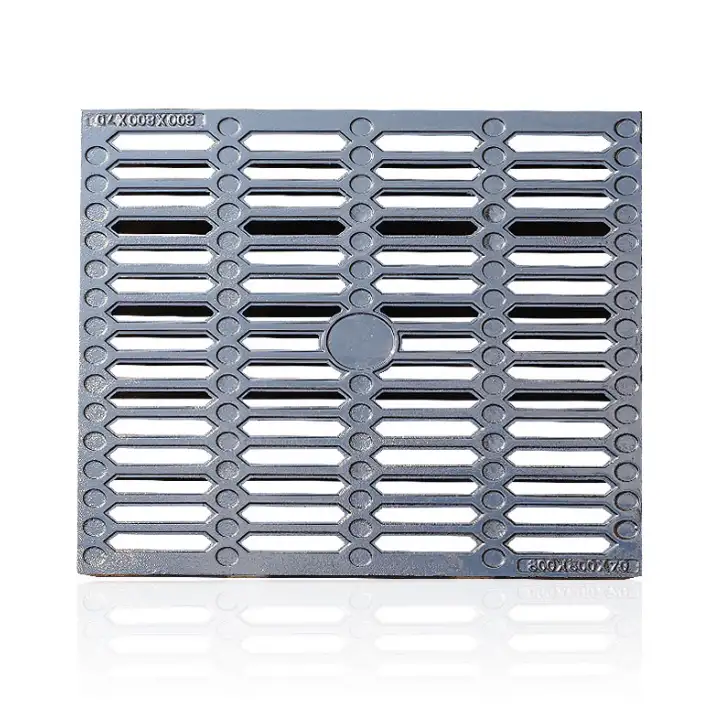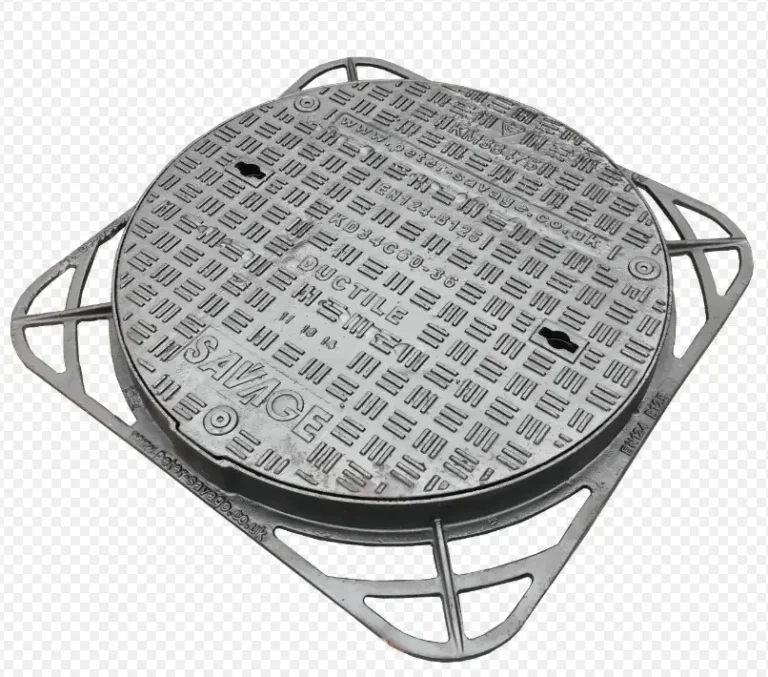Class 56 ductile iron pipe is a special-thickness schedule engineered for extreme pressure and high-load applications. Per ANSI/AWWA C150/A21.50 and A21.51, its wall thickness ranges from 0.40 in (3″) to 1.05 in (54″) across 3″–64″ sizes, as detailed in EJ Prescott R-6 design tables. A 6″ Class 56 pipe boasts an internal working pressure of 1,726 psi plus a 100 psi surge allowance, with all gaskets and joint systems rated identically. It features centrifugally applied cement-mortar lining and optional polyethylene sleeving, delivering an expected 100+ year service life in typical soils. Installation is streamlined by push-on, mechanical, restrained and flanged joints—Tyton push-on gaskets, gland-and-bolt restraints and ANSI B16.1/AWWA C207 flanges—ensuring rapid, leak-tight assembly and thrust resistance. Fully compliant with ANSI/AWWA C150/C151, C104/C105, C110/C111, ISO 2531, EN 545 and EN 598, it meets global benchmarks for dimensions, linings and joints. Compared with Classes 52, 53, 54, 150, 250 and 350, Class 56 delivers the highest structural capacity for deep-bury, seismic and dynamic-load settings.
Application Scenarios
Class 56’s extreme rating makes it ideal for:
-
High-head water transmission: long feeder mains in pumped-storage or hydroelectric plants, where pressures exceed standard 350 psi limits.
-
Subsea and buoyant pipelines: buoyancy data show 4″–16″ DI pipes remain stable in water-filled trenches when sleeved.
-
Industrial process loops: high-pressure cooling, steam feed and chemical transfer lines in power, petrochemical or mining facilities.
Service Life
Modern ductile iron pipe installed per AWWA lining/encasement practices reliably exceeds 100 years in benign soils. In aggressive or stray-current environments, combined polyethylene sleeving and cathodic protection extend life toward the century mark, as shown in global field studies.
Installation and Connection
-
Push-On Joints (ANSI/AWWA C111): Tyton gaskets self-center for quick, bolting-free assembly in minimal bell holes.
-
Mechanical Joints (ANSI/AWWA C110): Gland-and-bolt gaskets resist the full 1,726 psi working pressure, often eliminating thrust blocks.
-
Restrained Systems: Field-Lok® restraint glands lock spigot and bell under surge, supporting deep-cover or high-dynamic installations.
-
Flanged Connections: ANSI B16.1/250 psi or AWWA C207 flanges bolt to valves and pumps for rigid, leak-proof joints.
International Standards
-
ANSI/AWWA C150/A21.50 & C151/A21.51: Pressure-class thickness design and centrifugal-cast pipe dimensions
-
ANSI/AWWA C104/A21.4 & C105/A21.5: Cement-mortar lining and polyethylene encasement specifications
-
ANSI/AWWA C110/A21.10 & C111/A21.11: Mechanical and push-on joint performance criteria
-
ISO 2531:2012, EN 545, EN 598: International benchmarks for ductile iron pipe, fittings and joints
-
ISO 9001:2015: Quality management for DI pipe manufacturing
Comparative Parameters
| Class | Rated Pressure | Surge Allowance | Nominal Thickness at 12″ | Joint Types |
|---|---|---|---|---|
| 52 | 200 psi | 100 psi | 0.37 in | Mechanical only |
| 53 | 250 psi | 100 psi | 0.40 in | Mechanical only |
| 54 | ~300 psi | 100 psi | 0.43 in | Push-on, MJ, restrained, flanged |
| 150 | 150 psi | 100 psi | 0.31 in | Push-on, MJ, restrained, flanged |
| 250 | 250 psi | 100 psi | 0.40 in | Push-on, MJ, restrained, flanged |
| 350 | 350 psi | 100 psi | 0.46 in | Push-on, MJ, restrained, flanged |
*Thickness from EJ Prescott R-6 nominal tables.
Advantages
-
Ultimate Strength: Rated > 1,700 psi for 6″ and scalable for larger sizes.
-
Century-Long Durability: Proven > 100 year life under AWWA lining/encasement.
-
Versatile Installation: Four joint systems adapt to any site conditions.
-
Superior Corrosion Control: Cement-mortar lining plus optional sleeving/epoxy coatings.
-
Global Compliance: Meets all major ANSI/AWWA and ISO/EN standards.
Frequently Asked Questions
-
What defines Class 56?
A special-thickness schedule in AWWA C150/A21.50–91 providing net wall thicknesses above standard 350 psi classes; 6″ yields 1,726 psi working pressure. -
How does Class 56 differ from Class 54?
Class 56 adds approximately 0.03 in wall thickness per diameter compared to Class 54, boosting stiffness and surge tolerance. -
Can Class 56 be used in aggressive soils?
Yes—combine polyethylene sleeving (AWWA C105) and bonded coatings or cathodic protection for high-chloride or stray-current sites. -
Which joint type offers fastest assembly?
Push-on joints (Tyton) require minimal excavation and no field bolting, accelerating trench-side work. -
What sizes are available?
Nominal diameters from 3″ to 64″ per ANSI/AWWA C151.
Case Studies
-
Charleston, SC (1922–2019): Flow tests on 8″ cement-mortar lined mains installed in 1922 showed a Hazen–Williams C ≈ 140 after 97 years, confirming lining integrity and smoothness.
-
Global Corrosion Trials: Research on polyethylene sleeving revealed “excellent condition” for DI pipe in harsh environments after 50 years, outperforming unprotected samples.
ductile iron pipe dimensions
| Pipe body weight (kg/m) | |||||||||||||||
| (Inside Diameter) | (Outside Diameter) | Socket Weight | K8 | K9 | K10 | C class | Total weight of Active Length=6M (kg) | Total weight of Active Length=5.7M (kg) | |||||||
| DN(mm) | OD(mm) | ≈ kg | Class | kg/m | K8 | K9 | K10 | C class | K8 | K9 | K10 | C class | |||
| 80 | 98 | 3.40 | 12.20 | 12.20 | 12.20 | C40 | 9.10 | 77.00 | 77.00 | 77.00 | 58.00 | 73.00 | 73.00 | 73.00 | 55.00 |
| 100 | 118 | 4.30 | 14.90 | 15.10 | 15.10 | C40 | 11.12 | 93.70 | 95.00 | 95.00 | 71.00 | 90.00 | 91.00 | 90.00 | 68.00 |
| 125 | 144 | 5.70 | 18.90 | C40 | 119.00 | ||||||||||
| 150 | 170 | 7.10 | 21.80 | 22.80 | 22.80 | C40 | 16.48 | 138.00 | 144.00 | 144.00 | 106.00 | 132.00 | 138.00 | 137.00 | 101.00 |
| 200 | 222 | 10.30 | 28.70 | 30.60 | 30.60 | C40 | 22.62 | 183.00 | 194.00 | 194.00 | 146.00 | 174.00 | 185.00 | 185.00 | 139.00 |
| 250 | 274 | 14.20 | 35.60 | 40.20 | 44.30 | C40 | 32.63 | 228.00 | 255.00 | 280.00 | 210.00 | 218.00 | 244.00 | 267.00 | 200.00 |
| 300 | 326 | 18.90 | 45.30 | 50.80 | 56.30 | C30 | 43.90 | 290.00 | 323.00 | 357.00 | 282.00 | 278.00 | 309.00 | 340.00 | 269.00 |
| 350 | 378 | 23.70 | 55.90 | 63.20 | 69.60 | C30 | 51.88 | 359.00 | 403.00 | 441.00 | 335.00 | 343.00 | 384.00 | 420.00 | 319.00 |
| 400 | 429 | 29.50 | 67.30 | 75.50 | 83.70 | C30 | 60.78 | 433.00 | 482.00 | 532.00 | 394.00 | 414.00 | 460.00 | 506.00 | 376.00 |
| 450 | 480 | 38.30 | 80.00 | 89.30 | 99.00 | C30 | 73.30 | 515.00 | 575.00 | 632.00 | 472.00 | 492.00 | 550.00 | 597.00 | 450.00 |
| 500 | 532 | 42.80 | 92.80 | 104.30 | 115.60 | C30 | 87.20 | 600.00 | 669.00 | 736.00 | 566.00 | 572.00 | 638.00 | 702.00 | 540.00 |
| 600 | 635 | 59.30 | 122.00 | 137.30 | 152.00 | C30 | 120.62 | 791.00 | 882.00 | 971.00 | 783.00 | 755.00 | 842.00 | 926.00 | 747.00 |
| 700 | 738 | 79.10 | 155.00 | 173.90 | 193.00 | C25 | 142.15 | 1009.00 | 1123.00 | 1237.00 | 932.00 | 963.00 | 1071.00 | 1179.00 | 889.00 |
| 800 | 842 | 102.60 | 192.00 | 215.20 | 239.00 | C25 | 177.07 | 1255.00 | 1394.00 | 1537.00 | 1165.00 | 1197.00 | 1330.00 | 1465.00 | 1112.00 |
| 900 | 945 | 129.60 | 232.00 | 260.20 | 289.00 | C25 | 197.68 | 1521.00 | 1691.00 | 1863.00 | 1446.00 | 1452.00 | 1613.00 | 1777.00 | 1257.00 |
| 1000 | 1048 | 161.30 | 275.00 | 309.30 | 343.20 | C25 | 266.28 | 1811.00 | 2017.00 | 2221.00 | 1759.00 | 1729.00 | 1925.00 | 2118.00 | 1679.00 |
| 1100 | 1152 | 194.70 | 362.80 | 2372.00 | |||||||||||
| 1200 | 1255 | 237.70 | 374.00 | 420.10 | 466.10 | C25 | 373.88 | 2482.00 | 2758.00 | 3034.00 | 2481.00 | 2370.00 | 2632.00 | 2894.00 | 2369.00 |
| 1400 | 1462 | 279.30 | 547.20 | 3563.00 | |||||||||||
ductile iron pipe Mechanical property
| Mechanical Property | |||||||
| Nominal Diameter | Hydraulic test | Tensile strength | Elogation | Yield strength | Bending strength | Brinell hardness | Thickness of cement lining |
| DN(MM) | Mpa | Mpa | % | Mpa | Mpa | HB | mm |
| DN80-DN300 | 5 | ≥420 | ≥10 | ≥300 | ≥590 | ≤230 | 3 |
| DN350-DN600 | 4 | ≥420 | ≥10 | ≥300 | ≥590 | ≤230 | 5 |
| DN700-DN1000 | 3.2 | ≥420 | ≥10 | ≥300 | ≥590 | ≤230 | 6 |
| DN1100-DN1600 | 2.5 | ≥420 | ≥7 | ≥300 | ≥590 | ≤230 | ….. |
